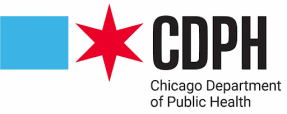Resource Library

The Office of the CMO Resource Library
Welcome to the CDPH Office of the CMO’s Resource Library. On this page, you will find a myriad of tools and documents intended to bridge the gap between public health and healthcare and bolster access to healthcare care activities in Chicago. These resources are intended for healthcare partners, key public health stakeholders, and the general public alike. For questions or feedback about anything contained on this page, please reach out to us at CDPHHealthSytems@cityofchicago.org.
Public Health vs. Healthcare
Slide 1:
Hello everyone and welcome to this training module, where we will dig into the topic of Public Health versus Healthcare. My name is Drake Rodriguez and this training was developed by the Chicago Department of Public Health’s Office of the Chief Medical Officer (CMO).
Slide 2:
The goal for today’s presentation will be to, 1: Define public health and healthcare, and, 2: For participants to develop an understanding of how these two worlds differ, interact, and overlap. If nothing else, we hope you walk away with an understanding of the differences between the two and the importance of bridging the gap between the worlds of public health and healthcare in order to achieve health equity in any given jurisdiction.
Slide 3:
Our agenda for today will begin with defining public health and covering the CDC’s 10 Essential Public Health Services.
We will then follow up with defining healthcare and providing some concrete examples.
We will wrap up by discussing the differences between public health and healthcare, how the two worlds can and should work together, and end by looking at what public health and healthcare look like here in the City of Chicago with an overview of determinants of health.
Slide 4:
What is public health? As you can imagine, there are many sources and definitions on what public health is and we chose two from the CDC to help paint a picture.
The CDC foundation defines public health as the science of protecting and improving the health of people and their communities. This work is achieved by promoting healthy lifestyles, researching disease and injury prevention, and detecting, preventing, and responding to infectious disease.
Another definition from the CDC’s Intro to Public Health Series is that public health is the science and art of preventing disease, prolonging life, and promoting health through the organized efforts and informed choices of society, organizations, public and private communities, and individuals.
Slide 5:
This graphic came from the CDC and represents the 10 Essential Public Health Services, a framework for public health to protect and promote the health of all people in all communities. We won’t walk through the entire graphic today, but we invite you to review on your own via the hyperlink at the bottom of the slide.
Broadly, the three major sections of the wheel are Assessment, Policy Development, and Assurance. Each slice of the wheel summarizes the services necessary to promote policies, systems, and services. Engaging in these activities enables good health and seeks to remove obstacles and systemic barriers- like poverty and racism, just to name a few.
Slide 6:
So now we are going to transition from public health and start to talk about what healthcare is.
What is healthcare? Per the American Journal of Public Health, “Healthcare refers to the organized system of services, resources, and professionals involved in promoting, maintaining, and restoring the health and well-being of individuals and communities”. Healthcare may also be called clinical care, which the CDC defines as prevention, treatment, and management of illness and preservation of mental and physical well-being through services offered by a medical and allied health professions. Healthcare focuses on providing direct medical care to individuals. Unlike public health, healthcare is often more focused on individual people and specific communities, rather than population and systems.
Slide 7:
What are some examples of healthcare?
Some examples include check-ups with a PCP, visiting a specialist (for example, a cardiologist or endocrinologist), urgent care visits, ER visits, hospitalization, and long-term care (for example, care in a skilled nursing facility).
Slide 8:
Now let’s compare and contrast public health and healthcare. According to the Harvard School of Public Health, public health focuses on populations while healthcare is an individual patient focus. Public health works to prevent disease and promote health for entire communities while healthcare focuses on disease diagnosis, treatment, and care of individuals. Finally, public health collects data on populations while healthcare focuses on the individual. Here we have another graphic from the CDC that gives a more in-depth difference between public health and healthcare.
Slide 9:
We just focused on the differences between public health and healthcare, so now let’s discuss where public health and healthcare overlap. Both aim to improve health outcomes; both invest in “downstream” prevention efforts such as vaccinations and health education. Both contribute to developing policies and programs that promote health and prevent disease at the population level, and they are both essential for communities to thrive. While public health and healthcare are different, it’s essential to bridge the gap between these two worlds to achieve equitable health outcomes for any population.
Slide 10:
As mentioned on the last slide, public health and healthcare both aim to improve health outcomes. In order to actually improve health outcomes we have to consider the determinants of health, which we will discuss on this slide.
The model depicted here, which is from “County Health Rankings,” demonstrates how different elements affect health outcomes. Starting here at the bottom left in the orange box we have “Policies & Programs”, which are created and implemented at the local, state, and federal levels and play an important role in influencing health factors. Moving up to the next box we have “health factors”, which represent things we can improve to live longer and healthier lives. Moving over to the right and starting at the top we have “health behaviors”, which includes alcohol and drug use, diet and exercise, sexual activity, and tobacco use. Next we have “clinical care”, which includes access to healthcare and the quality of the healthcare we receive. The next factor is “social and economic factors.” The factors that make up this category include education, employment, income, family and social support and community safety. Finally, the last factor is “physical environment”, which includes air and water quality, and housing and transit. That wraps up the various health factors. Those factors lead to health outcomes. Health outcomes is the final box at the top of the slide. Health outcomes tell us how long people live on average within a community, and how much physical and mental health people experience in a community while they are alive. Health outcomes are influenced by many factors such as clean water, affordable housing, the quality of medical care and the availability of good jobs. Programs and policies at the local, state and federal levels influence these factors. Health outcomes include length of life, including premature death, life expectancy and infant mortality. Another component of health outcomes is quality of life, which includes self-reported physical and mental wellness. Both public health and healthcare aim to improve these determinants of health, and ultimately increase the length and quality of our lives.
Slide 11:
Before we wrap up, let’s take a look at what public health and healthcare look like in Chicago. Chicago is the third largest city in the United States with a population of 2.74 million according to the US 2020 Census. Chicago is composed of a large healthcare system and department of public health. Specifically, Chicago has 22 Federally Qualified Health Center systems with over one hundred clinics, 35 hospitals, and over 100 urgent care centers. As of 2023, The Chicago Department of Public Health, which is our local health department, employs about 675 dedicated individuals, including myself. The Chicago Department of Public Health’s mission is to work with communities and partners to create an equitable, safe, resilient and Healthy Chicago and to ensure everyone in Chicago thrives and achieves their optimal health and wellness.
Slide 12:
Here at CDPH, we have an entire office dedicated to bridging the gap between our local health department and the Chicago health care system. That office is our CDPH Office of the Chief Medical Officer, which is a new, unique, and cross-departmental space at CDPH created in 2022. You can reach us at the central email address at the bottom of this slide or included on our website where this training is posted.
Slide 13
Thank you for viewing this training module. We hope you are walking away with some solid definitions of public health and healthcare, and a better understanding of how we can all work together to bridge the gap in service of health equity, regardless of jurisdiction.
To learn more, visit our resource library at Chicago.gov/CMO. Thank you!




